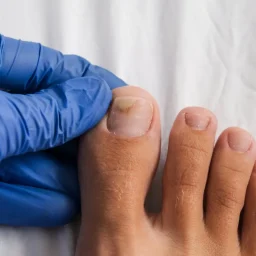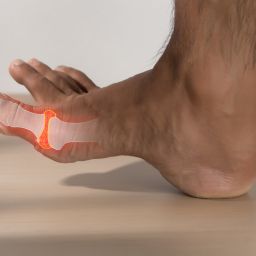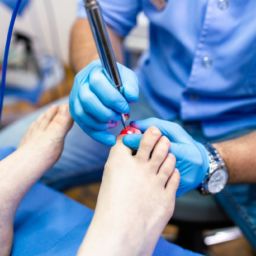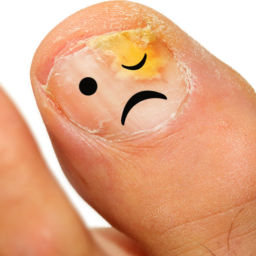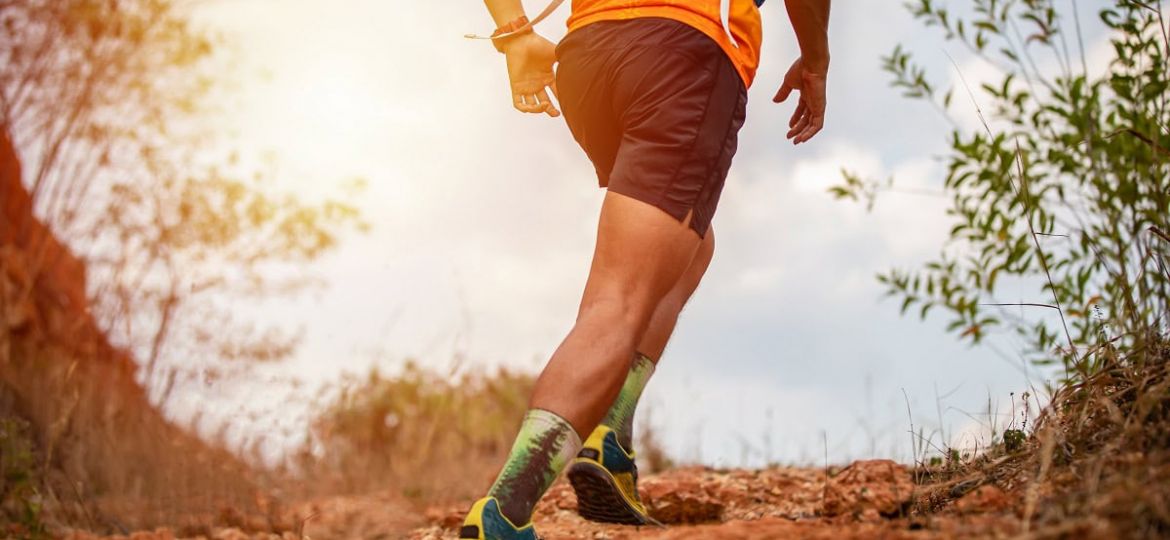
What is Athlete’s Foot?
Athlete’s foot, also known as tinea pedis, is a common fungal infection affecting the skin on the feet. It’s caused by dermatophytes, a group of fungi that thrive in warm, moist environments like locker rooms, showers, and swimming pools. The infection is highly contagious and can spread through direct contact with an infected person or by touching contaminated surfaces. It often starts between the toes and can spread to other parts of the foot. To prevent athlete’s foot, it’s important to keep feet clean and dry, and to avoid walking barefoot in communal areas.
What Are the Symptoms of Athlete’s Foot?
Athlete’s foot primarily affects the skin on the feet. It thrives in warm, moist environments and is highly contagious, making communal areas like swimming pools, locker rooms, and public showers prime locations for transmission. Recognizing the symptoms early can help in managing and treating this condition effectively. Let’s get into more detailed symptoms below:
- Itching and Burning Sensation: One of the primary foot symptoms is an intense itching and burning feeling, particularly in the spaces between the toes.
- Redness and Scaling: The skin on the feet may turn red and scaly, often looking dry and cracked, which is a pretty sign for most people with this condition.
- Fluid-Filled Blisters: Symptoms of athlete’s foot can include the formation of fluid-filled blisters. These blisters can burst, leading to open sores and increased risk of further infection.
- Cracked and Peeling Skin: The skin on the feet, especially between the toes and on the soles, may start to crack and peel. This can cause pain and discomfort.
- Odor: A noticeable foot odor may develop due to the fungal infection and its interaction with sweat.
- Thickened Skin: The affected areas might exhibit thickened, rough skin, which can become more pronounced if not treated.
- Secondary Bacterial Infections: Open blisters and cracked skin can lead to secondary bacterial infections, causing additional redness, swelling, and pus.
- Spread of Infection: The infection can spread to other parts of the feet, such as the toenails, causing discoloration and thickening of the nails. It can also spread to other areas of the body if not properly managed.
Prevention Tip: Keeping feet clean and dry is crucial. Wash your feet regularly, dry them thoroughly, and avoid walking barefoot in communal areas like swimming pools to prevent the spread of the infection.
How Can You Manage Athlete’s Foot Conditions at Home?
Managing athlete’s foot at home involves simple yet effective measures to prevent the spread and recurrence of the fungal infection. Here are some handy prevention tips:
- Use Antifungal Powder: Applying antifungal powder or spray to your feet and inside your shoes can help kill the fungus and prevent its growth. This is especially beneficial if you’re prone to sweating or if you wear closed shoes for extended periods.
- Wear Sandals or Flip Flops: When using communal areas like locker rooms, public showers, or swimming pools, wear sandals or flip-flops to minimize direct contact with potentially contaminated surfaces. This reduces the risk of picking up the fungal infection.
- Maintain Dry Feet: Keep your feet clean and dry, especially between the toes. Moisture creates an ideal environment for fungal growth, so pat your feet dry thoroughly after bathing or sweating.
- Choose Breathable Footwear: By choosing shoes made from breathable materials like leather or mesh, you’re allowing better allow air circulation, reducing moisture buildup, and inhibiting fungal growth.
- Avoid Walking Barefoot in Public Areas: Refrain from walking barefoot in public places, particularly where the floor may be damp or prone to fungal contamination. Wearing socks and shoes provides a barrier of protection.
By following these simple yet effective home management tips, you can help prevent athlete’s foot from developing or recurring. Consistency in foot hygiene practices and minimizing exposure to the fungus in communal areas are key strategies in managing this common fungal infection.
Do Antifungal Medicines Work as a Treatment for Athletes Foot?
Several over-the-counter antifungal creams are effective in treating athlete’s foot. Here are some of the best options:
1. Clotrimazole: This antifungal cream is widely used and available without a prescription. It works by disrupting the growth of fungi and can be applied directly to the affected areas of the skin.
2. Terbinafine: Another common antifungal cream, terbinafine, is available in various formulations such as creams, gels, and sprays. It targets the fungus responsible for athlete’s foot and helps alleviate symptoms. This is the most commonly used treatment for athletes foot.
3. Miconazole: Miconazole is an antifungal medication available in cream form. It is effective against various fungal infections, including athlete’s foot, and is often recommended for its broad spectrum of activity.
4. Econazole: This antifungal cream is effective against dermatophytes, the fungi responsible for athlete’s foot. It helps relieve itching, redness, and scaling associated with the infection.
5. Tolnaftate: Tolnaftate is available as both a cream and a powder. It works by inhibiting the growth of fungi and is commonly used for treating athlete’s foot as well as other fungal infections like ringworm.
When choosing an antifungal cream for athlete’s foot, consider factors such as the severity of your symptoms, any allergies or sensitivities you may have, and whether you prefer a specific formulation (cream, gel, spray, etc.). ** Please be aware that this information does not constitute a direct prescription for the treatment of athlete’s foot. It’s important to consult your podiatrist or healthcare professional before using any medication or treatment for this condition. They can provide personalized advice based on your specific needs and medical history.
How Can Certified Foot and Ankle Specialists Treat Athletes Foot?
Our podiatrists play a crucial role in the diagnosis and treatment for athletes foot. Here are several ways in which they can assist with this condition:
1. Accurate Diagnosis: Our board-certified experts can accurately diagnose athlete’s foot through a physical examination of the affected area and, if necessary, by taking samples for laboratory analysis. This ensures that the treatment is targeted towards the specific fungal infection causing the symptoms.
2. Prescription Medications: Our doctors can prescribe antifungal medications, such as creams, ointments, or oral medications, based on the severity and type of athlete’s foot. These medications are often more potent than over-the-counter options and can provide faster relief.
3. Customized Treatment Plans: Every case of athlete’s foot is unique, and our team of podiatrists can create customized treatment plans tailored to individual needs. They consider factors such as the extent of the infection, underlying health conditions, and any allergies or sensitivities to medications.
4. Foot Hygiene: Our foot and ankle specialists educate patients on proper foot hygiene practices to prevent the recurrence of athlete’s foot. This encompasses suggestions such as maintaining clean and dry feet, choosing breathable shoes, and refraining from walking barefoot in shared spaces.
5. Monitoring and Follow-up: Our foot experts monitor the progress of treatment and make adjustments as needed. They also schedule follow-up appointments to ensure that the infection has resolved completely and to address any lingering concerns.
6. Prevention Strategies: Beyond treatment, our healthcare professionals offer advice on preventive measures to reduce the risk of future fungal infections. This may involve recommendations for foot care products, hygiene practices, and lifestyle adjustments.
The team at Certified Foot and Ankle Specialists is dedicated to providing a comprehensive approach to managing athlete’s foot. Our podiatrists offer accurate diagnoses, effective treatments, personalized care plans, and ongoing support to promote foot health and prevent recurrence. If you’re looking for a podiatrist in Coral Springs, Florida, or a local podiatrist near you in West Palm Beach, visit our foot and ankle clinics for effective athlete’s foot treatment. To make an appointment, visit our website or call (855)550-3338.


